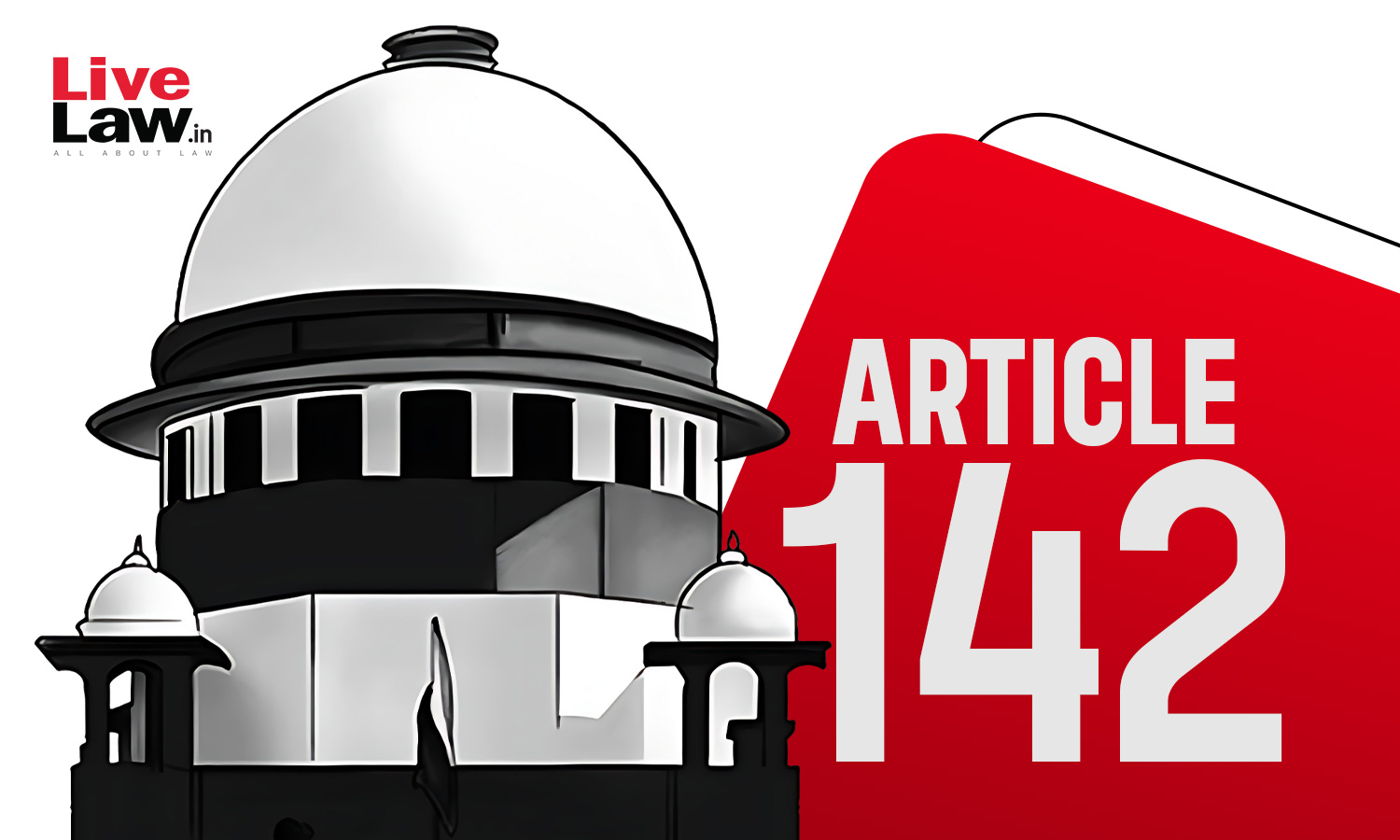Introduction
Article 142 of the Indian Constitution is a powerful provision that grants extraordinary authority to the Supreme Court of India to deliver complete justice in any pending case. This article has been pivotal in many landmark decisions where existing laws were insufficient or silent, and justice required a broader interpretation of the law.
In this article, we explore the meaning of Article 142, its significance, and the recent cases where it has been applied by the Supreme Court.
🔍 What is Article 142 of the Indian Constitution?
Article 142(1) states:
“The Supreme Court in the exercise of its jurisdiction may pass such decree or make such order as is necessary for doing complete justice in any cause or matter pending before it…”
This provision empowers the Supreme Court to ensure justice is not denied due to technical limitations or statutory gaps. It allows the Court to go beyond the strict letter of the law to protect constitutional values.
⚖️ Key Features of Article 142
-
It is a discretionary power exclusive to the Supreme Court.
-
It overrides limitations found in ordinary laws or procedures.
-
Used in exceptional circumstances for complete justice.
-
Applicable in cases related to constitutional rights, environment, criminal law, and family law.
🧾 Recent Cases Where Article 142 Was Invoked by the Supreme Court
✅ 1. Granting Divorce Without Mutual Consent (2023)
In a landmark verdict, the Supreme Court Constitution Bench ruled that it could dissolve a marriage under Article 142 on grounds of irretrievable breakdown, even if mutual consent was absent under the Hindu Marriage Act.
-
Case Name: Shilpa Sailesh v. Varun Sreenivasan
-
Significance: Empowered the judiciary to prevent long-term mental agony in failed marriages.
✅ 2. Bilkis Bano Case – Convicts’ Release Reversed (2024)
In January 2024, the Court struck down the Gujarat government’s remission order that prematurely released 11 convicts in the Bilkis Bano gangrape case from the 2002 Gujarat riots. The Court used Article 142 to order their return to prison, citing jurisdictional errors.
-
Case Name: Bilkis Yakub Rasool v. Union of India
-
Significance: Restored faith in justice by protecting victim rights and correcting executive overreach.
✅ 3. Permanent Commission for Women in Armed Forces
The Court invoked Article 142 to enforce its judgment granting permanent commission to women officers in the Indian Army and Navy, pushing the government to follow through on its directions.
-
Case Name: Ministry of Defence v. Babita Puniya
-
Significance: Strengthened gender equality and ensured execution of court rulings.
✅ 4. Environmental Measures in Delhi NCR
The Supreme Court has repeatedly used Article 142 to tackle Delhi’s pollution crisis, ordering bans on firecrackers, regulating stubble burning, and issuing guidelines when state action was inadequate.
-
Significance: Ensured environmental justice in public interest matters using its constitutional powers.
⚠️ Concerns and Limitations of Article 142
While Article 142 is a powerful tool, it is not without criticism:
-
May lead to judicial overreach
-
Lack of clear checks and balances
-
Potential encroachment into legislative or executive domains
However, the Supreme Court has often clarified that Article 142 is to be used sparingly, only when no other legal remedy can ensure complete justice.
🧠 Conclusion
Article 142 stands as a testament to the Indian Constitution’s commitment to justice, equity, and fairness. By empowering the Supreme Court to deliver justice in the truest sense, this article ensures that human rights, dignity, and constitutional values are upheld, even when existing laws fall short.
Through landmark decisions like the Bilkis Bano case, marriage dissolution without mutual consent, and gender equality in the armed forces, the Supreme Court has demonstrated the constructive use of Article 142 to protect and preserve the spirit of justice.
📌 Frequently Asked Questions (FAQs)
Q1. What is Article 142 of the Indian Constitution?
A: Article 142 empowers the Supreme Court to pass any order necessary to do complete justice in a case. It gives the Court the authority to bridge legal gaps when existing laws are inadequate.
Q2. Can Article 142 override existing laws?
A: Yes, in exceptional cases, the Supreme Court can override or go beyond statutory law to ensure justice, but this power is used sparingly and with caution.
Q3. Who can use Article 142?
A: Only the Supreme Court of India can invoke Article 142. High Courts or other lower courts do not have this authority.
Q4. What are some recent examples of Article 142 in action?
A: Recent examples include:
-
Granting divorce without mutual consent (2023)
-
Reversing remission in the Bilkis Bano case (2024)
-
Enforcing women’s permanent commission in the armed forces
-
Pollution control measures in Delhi NCR
Q5. Is Article 142 controversial?
A: Yes, it has been debated for possibly enabling judicial overreach, but it remains a crucial tool for delivering substantive justice in hard-to-resolve legal conflicts.






